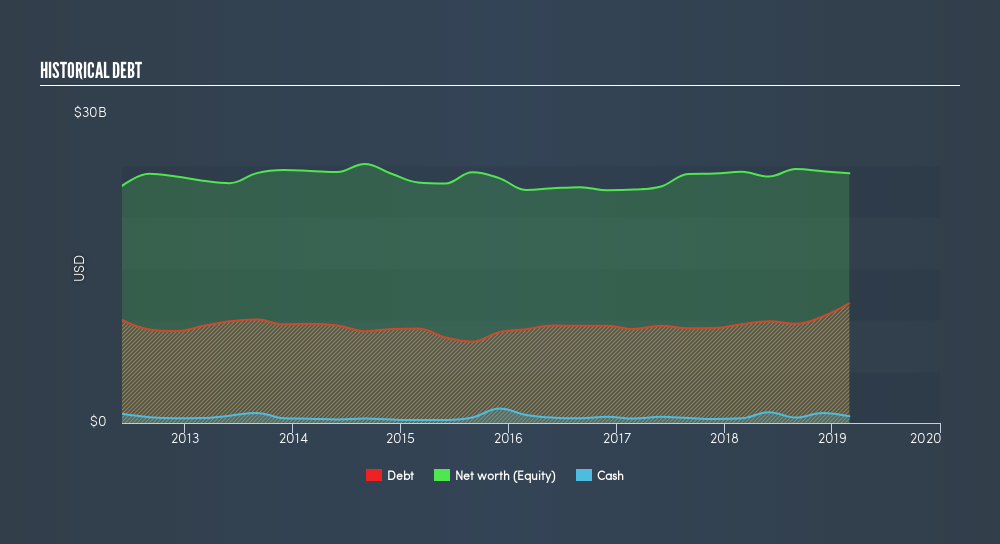- United Kingdom
- /
- Hospitality
- /
- LSE:CCL
What You Must Know About Carnival plc's (LON:CCL) Financial Strength
Investors pursuing a solid, dependable stock investment can often be led to Carnival plc (LON:CCL), a large-cap worth UK£28b. One reason being its ‘too big to fail’ aura which gives it the appearance of a strong and stable investment. But, the key to extending previous success is in the health of the company’s financials. I will provide an overview of Carnival’s financial liquidity and leverage to give you an idea of Carnival’s position to take advantage of potential acquisitions or comfortably endure future downturns. Note that this information is centred entirely on financial health and is a high-level overview, so I encourage you to look further into CCL here.
View our latest analysis for Carnival
Does CCL Produce Much Cash Relative To Its Debt?
CCL has built up its total debt levels in the last twelve months, from US$9.6b to US$12b , which includes long-term debt. With this growth in debt, CCL currently has US$649m remaining in cash and short-term investments , ready to be used for running the business. Additionally, CCL has produced US$5.6b in operating cash flow in the last twelve months, resulting in an operating cash to total debt ratio of 48%, signalling that CCL’s current level of operating cash is high enough to cover debt.
Can CCL pay its short-term liabilities?
At the current liabilities level of US$9.6b, the company may not be able to easily meet these obligations given the level of current assets of US$2.1b, with a current ratio of 0.22x. The current ratio is calculated by dividing current assets by current liabilities.

Can CCL service its debt comfortably?
With a debt-to-equity ratio of 48%, CCL can be considered as an above-average leveraged company. This isn’t surprising for large-caps, as equity can often be more expensive to issue than debt, plus interest payments are tax deductible. Consequently, larger-cap organisations tend to enjoy lower cost of capital as a result of easily attained financing, providing an advantage over smaller companies. The sustainability of CCL’s debt levels can be assessed by comparing the company’s interest payments to earnings. As a rule of thumb, a company should have earnings before interest and tax (EBIT) of at least three times the size of net interest. In CCL's case, the ratio of 18.32x suggests that interest is amply covered. It is considered a responsible and reassuring practice to maintain high interest coverage, which makes CCL and other large-cap investments thought to be safe.
Next Steps:
Although CCL’s debt level is towards the higher end of the spectrum, its cash flow coverage seems adequate to meet debt obligations which means its debt is being efficiently utilised. Though its lack of liquidity raises questions over current asset management practices for the large-cap. This is only a rough assessment of financial health, and I'm sure CCL has company-specific issues impacting its capital structure decisions. I recommend you continue to research Carnival to get a more holistic view of the stock by looking at:
- Future Outlook: What are well-informed industry analysts predicting for CCL’s future growth? Take a look at our free research report of analyst consensus for CCL’s outlook.
- Valuation: What is CCL worth today? Is the stock undervalued, even when its growth outlook is factored into its intrinsic value? The intrinsic value infographic in our free research report helps visualize whether CCL is currently mispriced by the market.
- Other High-Performing Stocks: Are there other stocks that provide better prospects with proven track records? Explore our free list of these great stocks here.
We aim to bring you long-term focused research analysis driven by fundamental data. Note that our analysis may not factor in the latest price-sensitive company announcements or qualitative material.
If you spot an error that warrants correction, please contact the editor at editorial-team@simplywallst.com. This article by Simply Wall St is general in nature. It does not constitute a recommendation to buy or sell any stock, and does not take account of your objectives, or your financial situation. Simply Wall St has no position in the stocks mentioned. Thank you for reading.
About LSE:CCL
Carnival Corporation &
A cruise company, provides leisure travel services in North America, Australia, Europe, and internationally.
Solid track record and good value.
Similar Companies
Market Insights
Community Narratives



